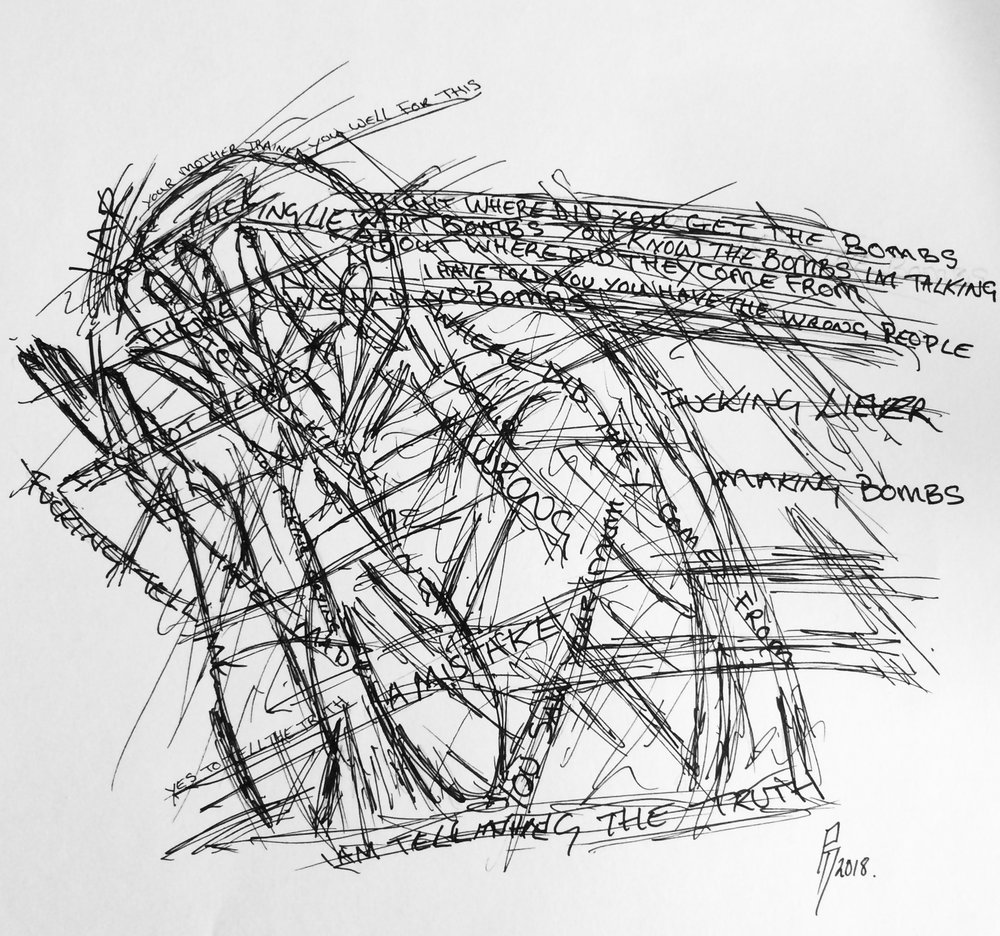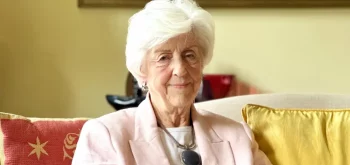How misuse of DNA evidence has led to miscarriages of justice
 DNA analysis has revolutionised forensic science; helping to catch prolific murderers and shining a light on miscarriages of justice that have seen innocent people wrongfully convicted of serious crimes. Such is the power of DNA to identify, convict, and exonerate, that many perceive it to be infallible. Yet DNA evidence has a number of limitations and the costs of not being aware of these can be huge.
DNA analysis has revolutionised forensic science; helping to catch prolific murderers and shining a light on miscarriages of justice that have seen innocent people wrongfully convicted of serious crimes. Such is the power of DNA to identify, convict, and exonerate, that many perceive it to be infallible. Yet DNA evidence has a number of limitations and the costs of not being aware of these can be huge.
As a forensic geneticist of 35 years standing, I have been very closely involved with every stage of the development of DNA profiling since its discovery in 1985. Yet over recent years, I have become particularly concerned with standards of practice and the court statements written by some forensic scientists.
To provide balance, an essential part of reporting evidence in court is ensuring that the alternative defence explanations are clearly explained by experts, and considered by the court in an unbiased way. (Even though a scientist ‘works’ for the prosecution, in court all such affiliations disappear – you are purely a servant of the court – in doing so, the evidence against the prosecution case must be explained. When I was first trained to report cases at the FSS, it was explained: ‘You have to load a metaphoric gun and hold it to your own head”.) Sadly, this internal scrutiny from forensic geneticists is often missing.
Also, in the modern era of DNA profiling, techniques are now so sensitive that routinely detecting minute amounts of DNA is possible – even from just a handful of cells, meaning you could detect DNA that is irrelevant to the crime. Once a DNA profile is discovered, it can be used to implicate individuals. And trawling the national DNA database to find a DNA match may be used to wrongly identify individuals. Yet without context, such evidence can be embellished and may be presented in a strongly prosecution biased way ( See Misleading DNA evidence: Reasons for Miscarriages of Justice Gill, P (2014) Academic Press). This increased sensitivity of forensic DNA techniques therefore makes it even more important for defence teams to be aware of the limitations of DNA profiling evidence. They can and should reach a proper perspective, by appointing competent experts to challenge evidence and present it in an unbiased way.
Given the stakes of not recognising these limitations, I have been delighted to contribute to Making Sense of Forensic Genetics, a public guide. It aims to address these issues and really gets this message across to all those involved in the criminal justice system. The guide was developed by EUROFORGEN network, which I am part of, in partnership with the charity Sense About Science (as reported on the Justice Gap here).
It’s a messy world – so context matters
DNA is rarely deposited in neat packages from a single person. If a crime scene sample contains the DNA from two or more individuals, it is referred to as mixed DNA profile. Because DNA gets everywhere, all crime scene DNA samples are potential mixtures. This isn’t a problem, unless the DNA you’re trying to analyse is present at such low levels that it becomes confused with this background DNA, or with DNA from another contributor (e.g. a victim). In such situations, the strength of the evidence is calculated and explained to investigators and juries.
As forensic DNA techniques have become more and more sensitive, there’s an increased chance that DNA recovered from a crime scene is actually: background DNA (deposited before the crime took place and unrelated to it), secondary transfer DNA (DNA from someone who was never there, picked up from them by a handshake or more subtle contact and then left at the crime scene by another individual). Or, as in the case of Adam Scott (below), the result of contamination by an investigator after the crime took place either at the crime scene or laboratory.
The presence of DNA doesn’t tell us when or how it got there. There is no date or time-stamp and we can’t know which body tissue it came from if found in trace amounts. So additional context is needed from other, non-DNA evidence, such as fibres, footwear marks, or fingerprints. When this additional context is ignored, miscarriages of justice can – and as the four cases below highlight – have happened.
Case study: forensic laboratory contamination
In October 2011, Adam Scott was arrested and charged with raping a woman in Manchester, UK. Swabs of the woman’s genitals revealed traces of sperm, and one of these swabs yielded a DNA profile that matched Mr Scott’s. This was the only evidence against him. But Mr Scott claimed he was in his home town of Plymouth, UK (more than 200 miles away) at the time of the attack, and had never been to Manchester in his life.
When challenged, the scientist claimed the DNA evidence provided: ‘strong scientific support for the view that Adam Scott had sexual intercourse with [the victim] rather than he did not.’ However, this was an error. By itself, a DNA profile can’t provide any information about the body fluid it came from, or lead to the inference that sexual intercourse took place. Two months after his arrest, mobile phone records came to light that corroborated Mr Scott’s version of events; revealing that his mobile phone had been used in Plymouth a few hours after the reported rape. Finally, after five months in custody, he was released.
A subsequent investigation revealed that Mr Scott had become implicated as a result of accidental contamination of samples within the lab. The day before processing samples from the alleged rape victim, the lab had handled a DNA sample from Mr Scott, following a ‘spitting incident’ in Exeter, UK. Unfortunately the disposable plastic plate used to analyse this sample had been inadvertently reused in the rape case, resulting in the misidentification. The true perpetrator was never found.
This incident highlights two important points for courts: DNA should not be used as the sole evidence in a criminal case (see Safety in Numbers – Deciding When DNA Alone is Enough to Convict, Roth A New York University Law Review 85; and Guidance on Expert Evidence (2014), Crown Prosecution Service); and there is a considerable danger if the importance of the DNA evidence is inappropriately afforded greater weight than other evidence (Misleading DNA evidence – see above).
Case study: background DNA
Meredith Kercher was stabbed to death in Perugia, Italy, in 2007, and her flat-mate, Amanda Knox, was a key suspect. A knife retrieved from Ms Knox’s boyfriend’s flat contained small traces of Ms Kercher’s DNA on the blade, and a DNA profile from Ms Knox was recovered from the handle. Prosecutors suggested that the DNA was transferred to the knife when Ms Kercher was stabbed with it, although no blood was detected. Possibly, this was because the knife was cleaned with bleach, they argued. This is a classic example of confirmation bias, a psychological effect where an individual fits the evidence to a presupposed set of circumstances, while ignoring other possibilities. For instance, Ms Knox could have used the knife to cut bread (starch grains were also observed on the blade), and since she lived with Ms Kercher, there was a ready explanation for the presence of her DNA on the knife blade. Methods used to collect and store the evidence were also found to be sub-standard, so the DNA could also have got there through cross-contamination. In the final judgement, the court accepted the defence version of events and exonerated the defendants (Analysis and implications of the miscarriages of justice of Amanda Knox and Raffaele Sollecito (2016) Peter Gill, Forensic Science International: Genetics 23).
Case study: secondary transfer
When local taxi driver, David Butler’s DNA was recovered from the fingernails of murdered sex worker Anne Marie Foy, it seemed like an open and shut case. It was presumed that Ms Foy had torn at his skin as he hit and strangled her, before dumping her body in a park near Liverpool city centre in September 2005. The amount of DNA found by police was tiny, but enough to generate a hit against the UK’s DNA database, identifying Mr Butler as the source. He denied ever having met the victim, but even though other evidence was lacking, the DNA evidence was enough to see him charged with murder.
However, Mr Butler’s defence team queried precisely how that DNA got onto the victim’s nails. They established that he was sometimes known by the nickname ‘flaky’, because of the dry skin condition he suffered from, and suggested that perhaps some of his skin cells had transferred to bank notes that were later used to pay Ms Foy – an example of secondary DNA transfer – or through other innocent means. Mr Butler was acquitted.
Case study: database trawl leading to wrongful arrest
In 1999, Raymond Easton, a 49-year-old man from Swindon, UK, was arrested and charged with a burglary in Bolton, about 175 miles away, after a DNA sample from the crime scene matched his DNA profile in the UK national DNA database. Mr Easton was in the advanced stages of Parkinson’s disease, and was unable to walk more than ten metres without help. His DNA profile had been loaded onto the database four years earlier following a domestic dispute. The chance of a match was reported as 37-million-to-one. Mr Easton spent several months in custody before his solicitor persuaded police to run further DNA tests, which eliminated him.
As this case clearly highlights, it’s crucial to note that a match does not imply identity. Even with a probability as low as one-in-37-million that it’s a false match, you could find one or more innocent British men in the UK population who would match the crime scene profile described above. A false positive match occurs when an individual ‘matches’ a crime-scene profile but they are not the contributor. The match has occurred because, by chance, this individual has the same DNA profile as the perpetrator who left the crime-stain. The larger the DNA database, the higher the risks of false positive matches, which is why it is essential to consider the non-DNA evidence as well. If this is not done there is a danger that the DNA evidence will be over-weighted by a jury (see here)
Context is key
These four real cases are proven miscarriages of justice or wrongful arrests. I think it would be naïve to believe that they were isolated incidents – it’s probably just the tip of the iceberg. This is, therefore, a matter of deep concern. Studies of miscarriages of justice are important; they have revealed a particular, prosecution biased way of thinking about evidence that is sadly prevalent – and deeply flawed. Fortunately, Making Sense of Forensic Genetics helps to redress the issue by promoting a greater understanding of the strengths and limitations of use of DNA in criminal investigations.
I hope this guide will be used by the police, judiciary, lawyers, jurors, journalists and anyone intrigued by criminal casework, to understand what’s currently possible with DNA testing in forensic applications, what its limitations are, and what might be possible in future.
I am glad to join with colleagues across Europe to share our insights from years of expertise in the field, and to bring about a great awareness that:
- even if DNA is detected at a crime scene, this doesn’t establish guilt.
- DNA needs to be viewed within a framework of other evidence, rather than as a standalone answer to solving crimes.






